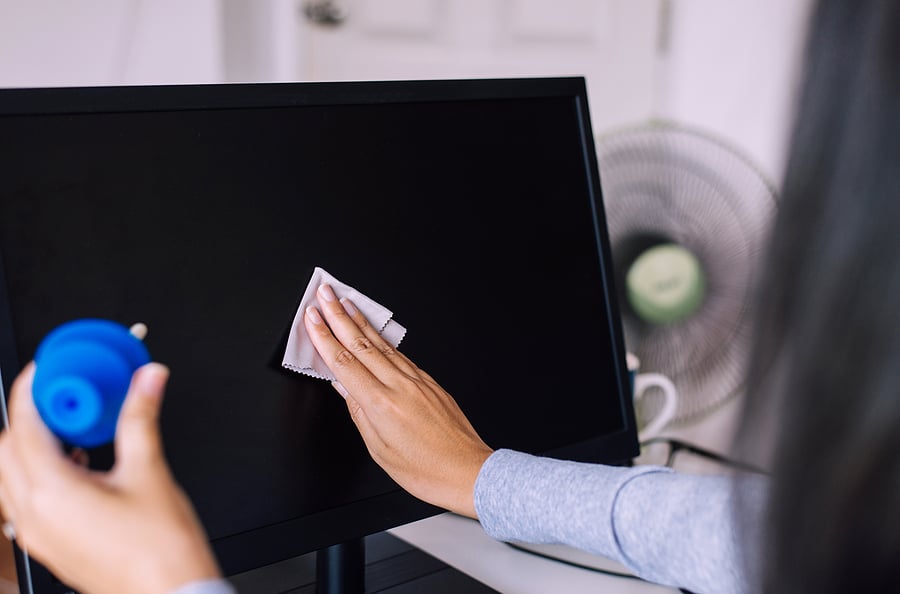
Most visitor check-in software works in tandem with an interactive touchscreen. Typically, the software will install on a PCAP technology touch screen, with sensors behind the glass – just like your smartphone or domestic tablet. Over time, the display interface will accumulate dirt and debris. If you don’t clean your visitor touchscreen, the presence of this dirt and debris may interfere with the ability to perform visitor check-in touch commands. So it's a good idea to clean weekly, especially if used daily.
Use a gentle cleaning product.
The screens and metal surround should be cleaned with a standard glass cleaner with antibacterial properties. Do not use an abrasive or harsh cleaner as this could cause damage to your visitor touchscreen. Harsh cleaning chemicals strip away the oil-repellent oleophobic coating, potentially wearing it down to the point where it’s no longer able to repel oils and protect your visitor screen.
Buff the screen
It’s recommended that you wipe the surface of your visitor touchscreen with a lint-free microfiber cloth to clean it. Not all cloths are suitable for touchscreen devices. Unless it’s lint free, it may leave small pieces of fabric or material on your device.
Use the right amount of water
Avoid saturating your touchscreen device with an excessive amount of water, too much could permanently damage your visitor check-in screen. However, using a slightly damp lint-free microfiber cloth to wipe the surface will easily clean off stubborn dirt and debris.
Promote good handwashing practice
The advent of COVID has underlined the benefit of handwashing to limit the spread of bacteria and viruses. In addition to normal bathroom facilities, it's helpful having an anti-bacterial gel dispenser in your reception area.